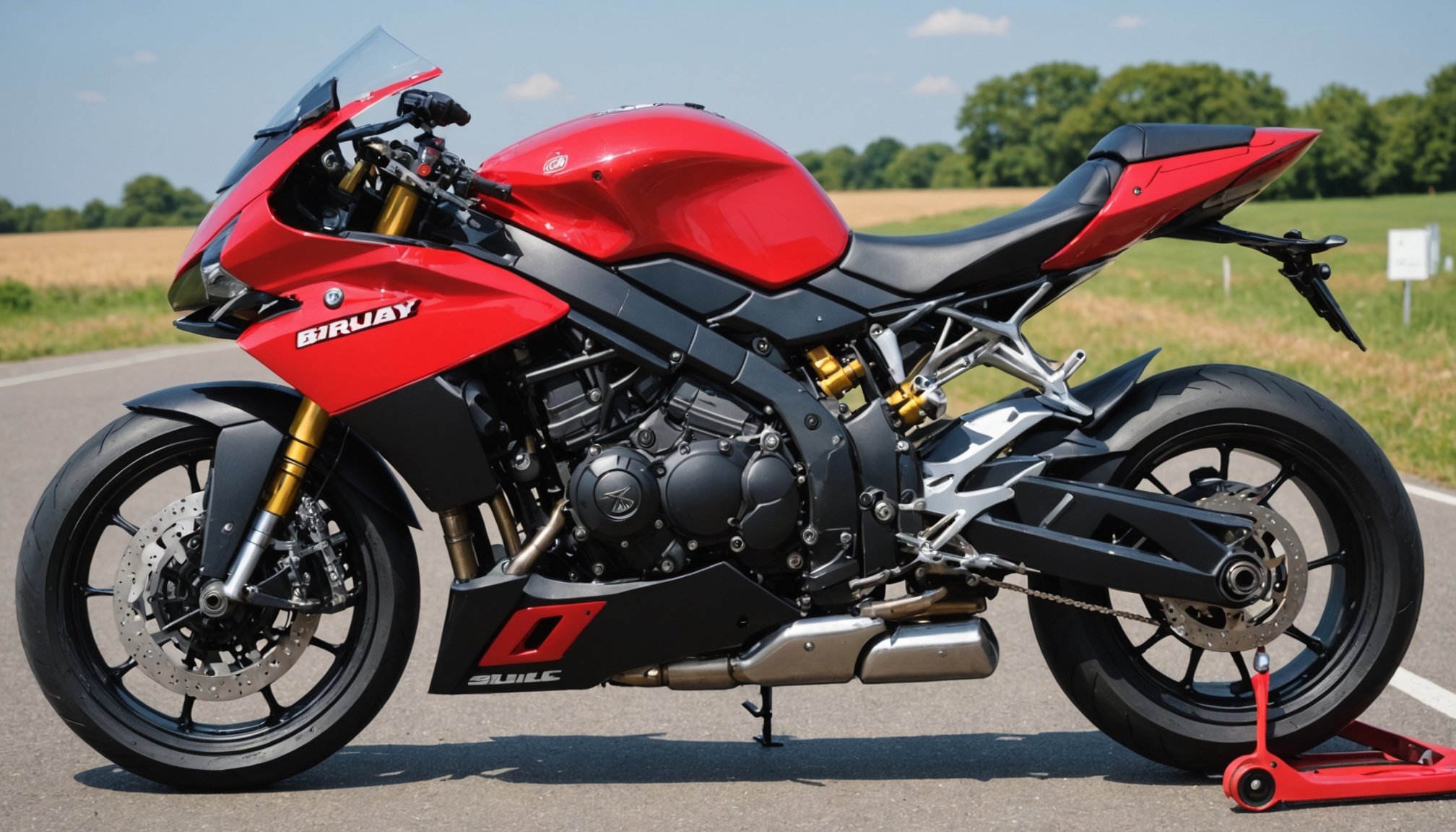Installing a Hydraulic Clutch on Your Sports Bike for Effortless Riding in UK Traffic
Why Consider a Hydraulic Clutch?
When it comes to riding a sports bike, especially in the congested traffic of the UK, having a smooth and efficient clutch system can make all the difference. A hydraulic clutch offers several advantages over the traditional cable-operated clutch, including reduced fatigue, improved consistency, and enhanced overall riding experience.
“A hydraulic clutch is a game-changer for riders who spend a lot of time in stop-and-go traffic,” says John Smith, a seasoned motorcycle mechanic. “It eliminates the need for constant clutch adjustments and provides a more precise feel, which is crucial for both novice and experienced riders.”
Also read : Top Techniques to Safely Regain Control of Your Sport Bike After a Skid on UK Roads
Understanding the Components
Before diving into the installation process, it’s essential to understand the key components involved in a hydraulic clutch system.
Master Cylinder
The master cylinder is the heart of the hydraulic clutch system. It converts the mechanical motion of the clutch lever into hydraulic pressure.
Also to discover : Ultimate Guide: Safely Transporting Your Sport Bike by Ferry Across the UK
Slave Cylinder
The slave cylinder is located at the engine and is responsible for actuating the clutch. It receives the hydraulic pressure from the master cylinder and translates it into mechanical force to engage or disengage the clutch.
Clutch Lever
The clutch lever is what the rider interacts with. In a hydraulic system, this lever is connected to the master cylinder, making the operation much smoother and less physically demanding.
Step-by-Step Installation Guide
Preparation
- Ensure Compatibility: Before starting, make sure the hydraulic clutch kit is compatible with your bike model. For example, if you own a Ninja or an Africa Twin, check the manufacturer’s specifications.
- Gather Tools and Materials: You will need a variety of tools including wrenches, pliers, and possibly a hydraulic fluid tester. Make sure you have all the components of the hydraulic clutch kit.
Removing the Old Clutch Cable System
- Disconnect the Battery: To avoid any accidental starts, disconnect the battery.
- Remove the Clutch Cable: Take out the old clutch cable from the clutch lever and the engine. This may involve removing some fairings or bodywork to access the cable.
- Drain the Hydraulic Fluid (if applicable): If your bike already has a hydraulic system, drain the old fluid before proceeding.
Installing the Master Cylinder
- Mount the Master Cylinder: Attach the master cylinder to the handlebar using the provided mounting hardware. Ensure it is securely fastened and aligned properly.
- Connect the Clutch Lever: Connect the clutch lever to the master cylinder. Make sure it is properly adjusted to avoid any free play.
Installing the Slave Cylinder
- Locate the Slave Cylinder Mounting Point: Identify where the slave cylinder will be mounted on the engine. This is usually specified in the installation manual.
- Mount the Slave Cylinder: Securely attach the slave cylinder to the engine. Ensure all connections are tight and properly aligned.
- Connect the Hydraulic Lines: Connect the hydraulic lines between the master and slave cylinders. Make sure these lines are not kinked or damaged.
Bleeding the Hydraulic System
- Fill the Master Cylinder with Hydraulic Fluid: Use the recommended hydraulic fluid and fill the master cylinder according to the manufacturer’s instructions.
- Bleed the System: Use a hydraulic bleeding kit to remove any air from the system. This is crucial to ensure the clutch operates smoothly and consistently.
Adjusting and Testing the Clutch
Adjusting the Clutch Lever
- Adjust the Free Play: Adjust the clutch lever to have the correct amount of free play. This is usually specified in the manual but generally around 1-2 mm.
- Check the Clutch Engagement: Start the engine and check that the clutch engages and disengages smoothly.
Testing the Clutch
- Static Test: With the bike stationary, test the clutch by engaging and disengaging it several times to ensure it is working correctly.
- Dynamic Test: Take the bike for a ride to test the clutch in various riding conditions, including low speed and high speed.
Benefits of a Hydraulic Clutch
Reduced Fatigue
A hydraulic clutch significantly reduces the physical effort required to operate the clutch, making long rides much more comfortable.
Improved Consistency
Unlike cable-operated clutches that can stretch or wear out over time, hydraulic clutches provide consistent performance without the need for frequent adjustments.
Enhanced Performance
With a hydraulic clutch, you can focus more on the ride and less on the mechanics of shifting gears, enhancing your overall riding experience.
Comparison with Manual Transmission
| Feature | Hydraulic Clutch | Manual Transmission with Cable Clutch |
|---|---|---|
| Effort Required | Minimal, hydraulic pressure does the work | Significant, manual effort required |
| Consistency | Consistent performance, no need for adjustments | Can be inconsistent due to cable wear |
| Fatigue | Reduces rider fatigue significantly | Can cause fatigue in heavy traffic |
| Maintenance | Less maintenance, no cable adjustments needed | Regular cable adjustments required |
| Cost | Generally more expensive to install | Less expensive to install and maintain |
Practical Tips and Considerations
Riding Position
Ensure your riding position is comfortable and allows easy access to the clutch lever. This is particularly important for long rides.
Chassis Design
The chassis design of your bike can affect how the hydraulic clutch system is installed and operated. For example, some bikes may require additional brackets or modifications.
Electronically Controlled Modes
Some modern bikes come with electronically controlled modes such as automatic or smart modes. Ensure that your hydraulic clutch system is compatible with these features.
Fuel Economy and Zero Emission
While a hydraulic clutch does not directly affect fuel economy or emissions, it can contribute to a smoother riding experience, which might indirectly improve fuel efficiency.
Real-Life Examples and Anecdotes
The Ninja Experience
“I recently installed a hydraulic clutch on my Ninja 1000,” says Sarah Johnson, a UK-based rider. “The difference is night and day. I can ride through London traffic without feeling exhausted, and the precision of the clutch is incredible.”
The Africa Twin Adventure
“During my trip across Africa on my Africa Twin, the hydraulic clutch was a lifesaver,” recounts Mark Davis, an adventure rider. “The terrain was challenging, but the clutch performed flawlessly, allowing me to focus on the ride rather than the mechanics.”
Installing a hydraulic clutch on your sports bike is a significant upgrade that can transform your riding experience, especially in the demanding traffic conditions of the UK. With its reduced fatigue, improved consistency, and enhanced performance, it is an investment worth considering for any serious rider.
Remember, while the installation process can be complex, taking your time and following the manufacturer’s instructions carefully will ensure a successful and rewarding upgrade. Happy riding






